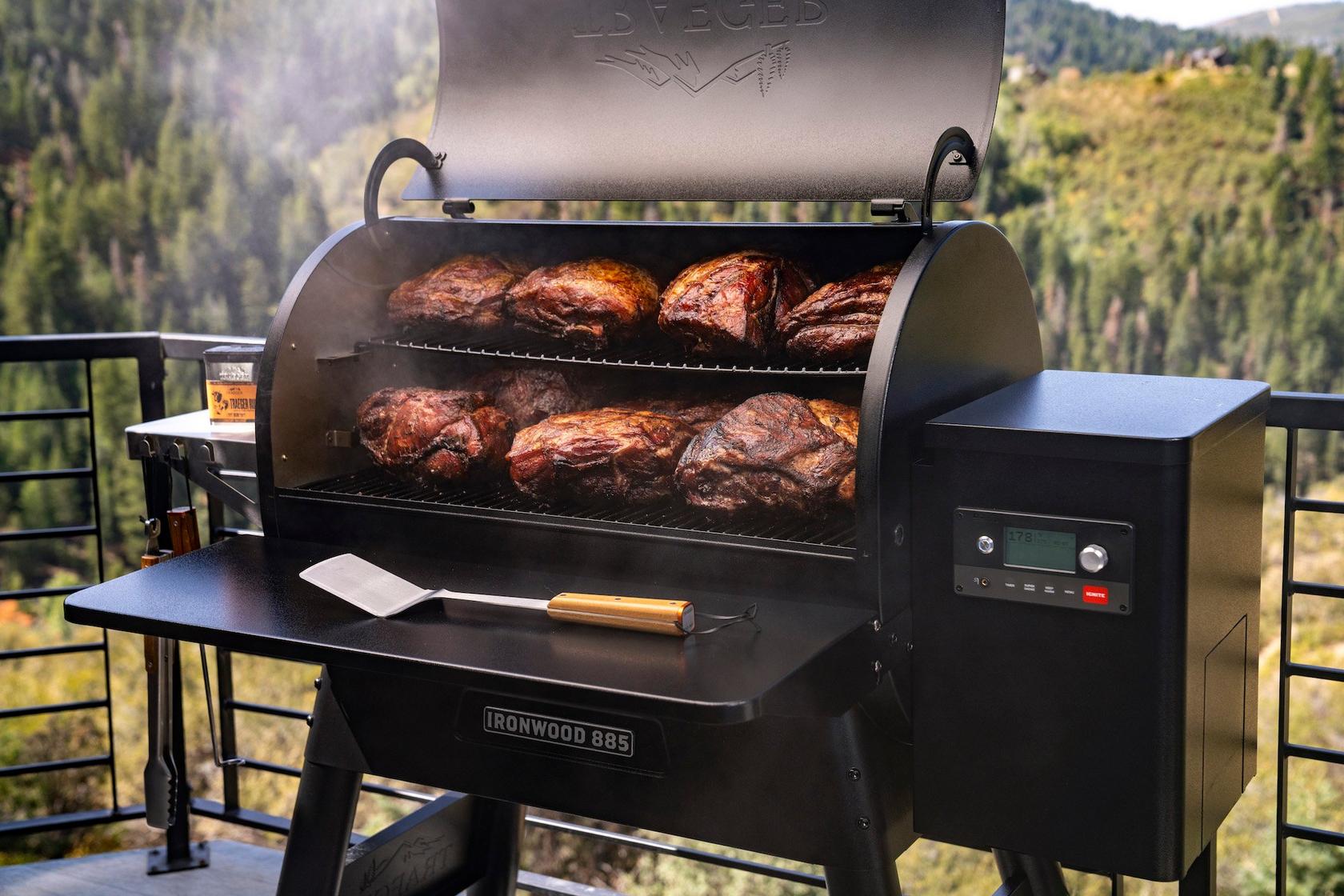
A pellet grill is a versatile cooking machine that excels at all kinds of food preparation, including grilling and roasting. But what initially draws people to a Traeger is the ability to smoke like a pro pitmaster without the hassle of tending a fire. By doing little more than pressing a button, Traeger owners can easily smoke a pork butt to tender perfection for pulled pork, make ribs as good as (or better) than any smokehouse, and even try their hand at brisket.
Beyond smoking meat, there’s smoked salmon, chicken, and turkey. Smoking also works wonders on vegetables like beets, potatoes, and mushrooms. Then there are the foods that you might not think to smoke yet are amazing, nonetheless: smoked deviled eggs, smoked cream cheese, and even smoked Cheez-Its.
How A Pellet Grill Works
Before we get into the details of smoking all this delicious food, let’s talk a bit about how a pellet grill works. The wood pellets themselves are made from compressed hardwood sawdust. Traeger pellets contain no fillers or binders, so all you get is the pure flavor of the wood. For all cooking, whether smoking or grilling, the pellets are automatically fed via an electrically powered auger into a fire pot beneath the grill cooking grates. There the pellets burn steadily and at a constant temperature guided by the unit’s digital controller. At lower temperatures, between 165°F and 275°F, the pellets produce ample smoke, adding wood-fired flavor to your food. To smoke food on a Traeger, all you basically need to do is set the grill temperature, put your food on the grate, and walk away.
Compare that ease of use to another popular smoker, namely an offset smoker. An offset smoker is comprised of a cooking chamber with a fire chamber off to the side. A fire, usually made with hardwood logs or briquettes, heats the food and adds smoke. Proponents say offset smokers can add a deeper smoky flavor, but between monitoring the heat source and the air flow, they require a lot of attention, which is the exact opposite of the Traeger’s set-it-and-forget-it capability (especially when you connect your grill to WiFi). And most offset smokers are not as versatile as a pellet grill, meaning you can’t also do high heat cooking on it.
Though the Traeger pellet grill is easy to use, there are some things to keep in mind when smoking as well as tips and tricks to guarantee the most delicious results. Keep reading to learn more.
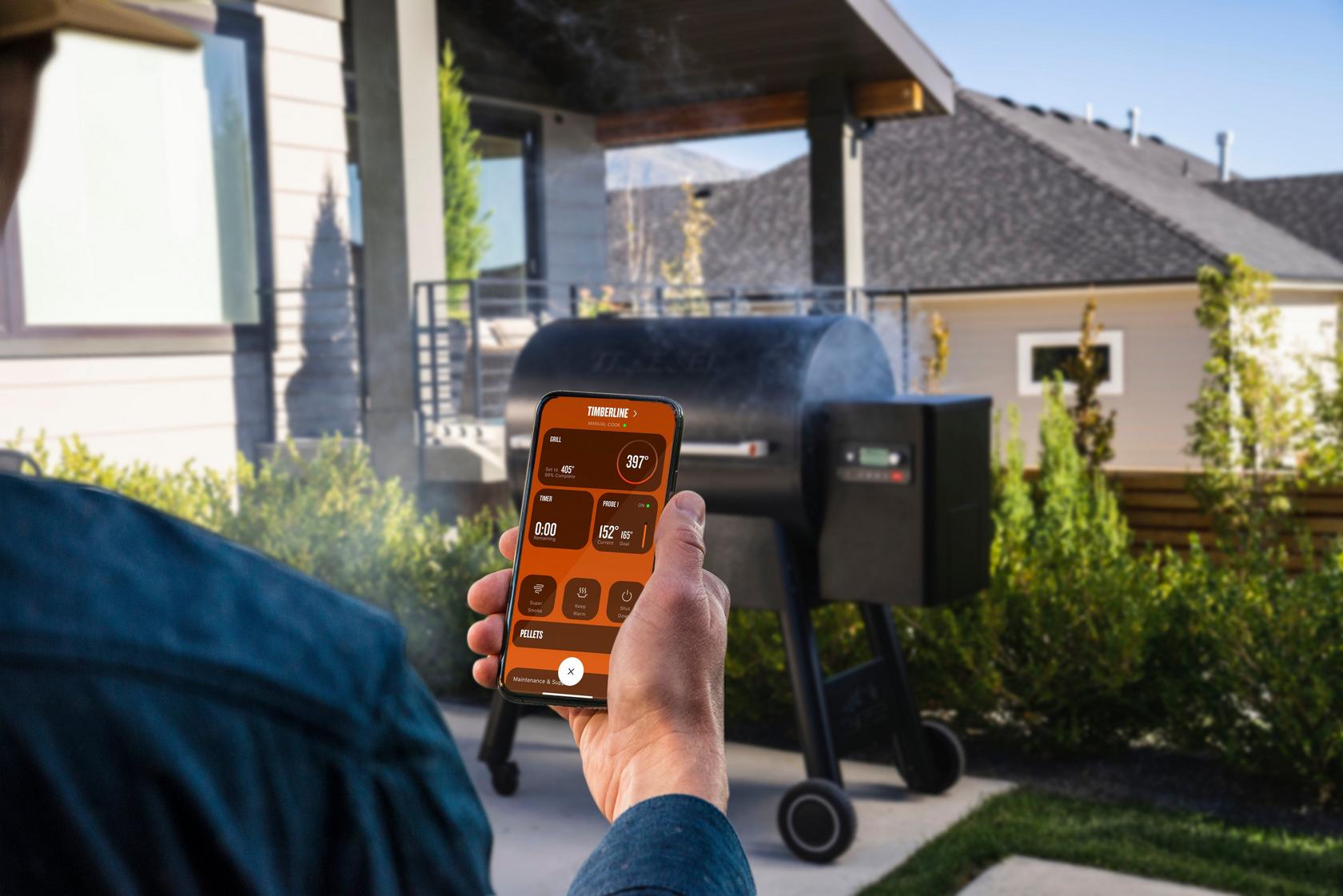
How To Smoke On A Traeger
Smoking on a Traeger pellet grill is easy, but if you follow the tips in this ultimate smoking meat, vegetables and more guide, your results will always be epic.
Start with a clean grill. Before you smoke anything on your Traeger you want to be sure the grill is clean. A clean grill ensures even heating and great tasting food. Any residual ash and sawdust should be vacuumed out and the grates, baffle, and drip tray wiped clean of excess grease and soot. For more detailed instructions on cleaning your Traeger, look here.
Fill the hopper with Traeger pellets. Though some foods don’t take long to smoke, the classics, including ribs, pork butt, and brisket, take hours and so will require enough pellets to feed the fire. We strongly recommend using Traeger pellets, which are slow burning and burn clean. Be sure the pellets are dry and have been kept that way; moist or wet pellets will not burn well. As to which pellet flavor to choose, that’s up to you. For the strongest smoke flavor, reach for hickory or mesquite. Pecan pellets, as well as our Signature pellets, add a more mellow wood-fired flavor, while cherry and apple will be the mildest of all. For more details on pairing foods with pellets, check out our wood pellet guide.
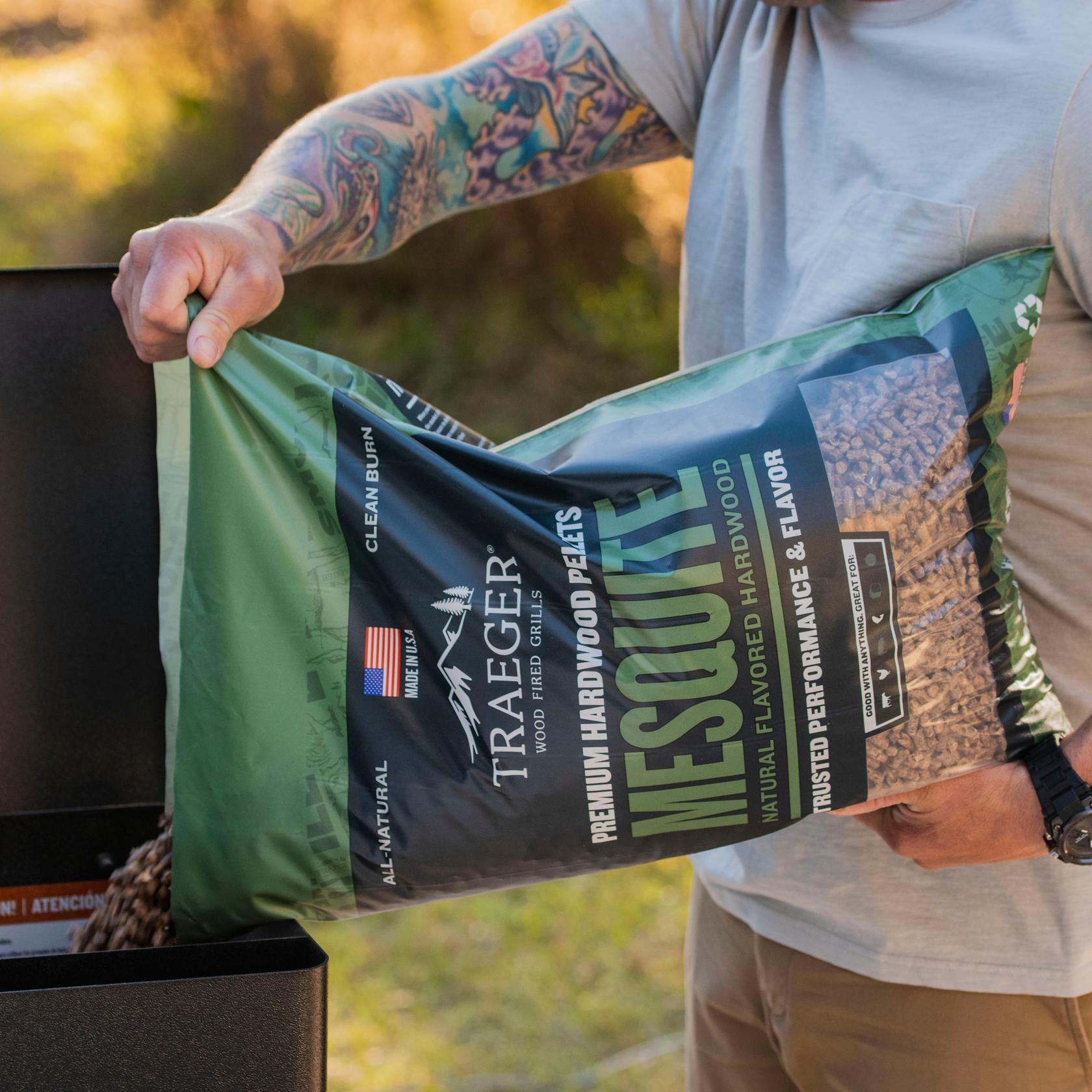
Prepare your food. Now that your grill is clean and your hopper full, you need to get your food ready. What meat should you smoke on your Traeger? Whatever you like best! Pork is especially well suited to smoking (think bacon) as its mild flavor soaks up the flavor of the wood. That said, a beef brisket is the holy grail of meat smoking, while chicken and fish offer lighter meat alternatives.
Once you’ve decided on your meat, you need to season it. That can be as simple as salt and pepper or also simple—but tastier—a Traeger spice rub.
Choose the right grill temperature. Smoked foods cook low and slow. The ideal grill temperature for smoking food is around 225°F, though some smoking recipes go as low as 165°F and others up to 275°F. And many recipes will have you start at a lower temperature to generate a lot of smoke and then raise that temperature to speed the cooking process once the food has absorbed the maximum wood-fired flavor.
While cooking low and slow is perfect for tough cuts like brisket and pork butts, smoking can also flavor quicker cooking meats before they are finished at a much higher heat. Many of our most delicious steak recipes start with a short smoke followed by a sear on high heat for the best of all worlds.
Use Super Smoke if you have it. If you want the optimum amount of wood-fired flavor, use the Super Smoke function if available on you Traeger. By simply pressing a button, you can increase the amount of smoke in the Traeger. Note that Super Smoke works at temperatures between 165°F and 225°F and that it need not stay on during the entire duration of a long cook.
Use a meat thermometer. We highly recommend using a leave-in meat thermometer when smoking meat. Many smoking recipes require some action, such as raising the grill temperature or wrapping the meat, when the meat reaches a certain internal temperature. Without a thermometer, there is no way to tell when this is reached. By using a leave-in thermometer, such as MEATER, there’s no need to keep opening the lid to check as you would need to do with an instant-read thermometer. And because the MEATER can connect to an app (either ours or its own), you can monitor the internal temperature remotely.
Also, though there may be some other doneness indicators for your smoked meat, such as it being fork tender for a pork butt, the thermometer confirms that you have reached optimal doneness. Our recipes often give suggested times, but because of variables like weather and the size of the meat, the internal temperature is always the best way to discern doneness.
Smoke the foods directly on the grate or use a pan. Smoking directly on the grill grate allows for the most smoke penetration, but using a sheet pan or an aluminum pan can keep things tidier, and there will still be plenty of wood-fired flavor.
Keep the grill lid closed during smoking. Many smoked meats cook for a longggggg time. Resist the urge to constantly open the grill lid to check on the meat; if you do, you will not only lose heat but precious smoke, too.
Let smoked meats rest. Once your smoked meat is done, let it rest. This helps redistribute the juices inside the meat guaranteeing it turns out tender and juicy.
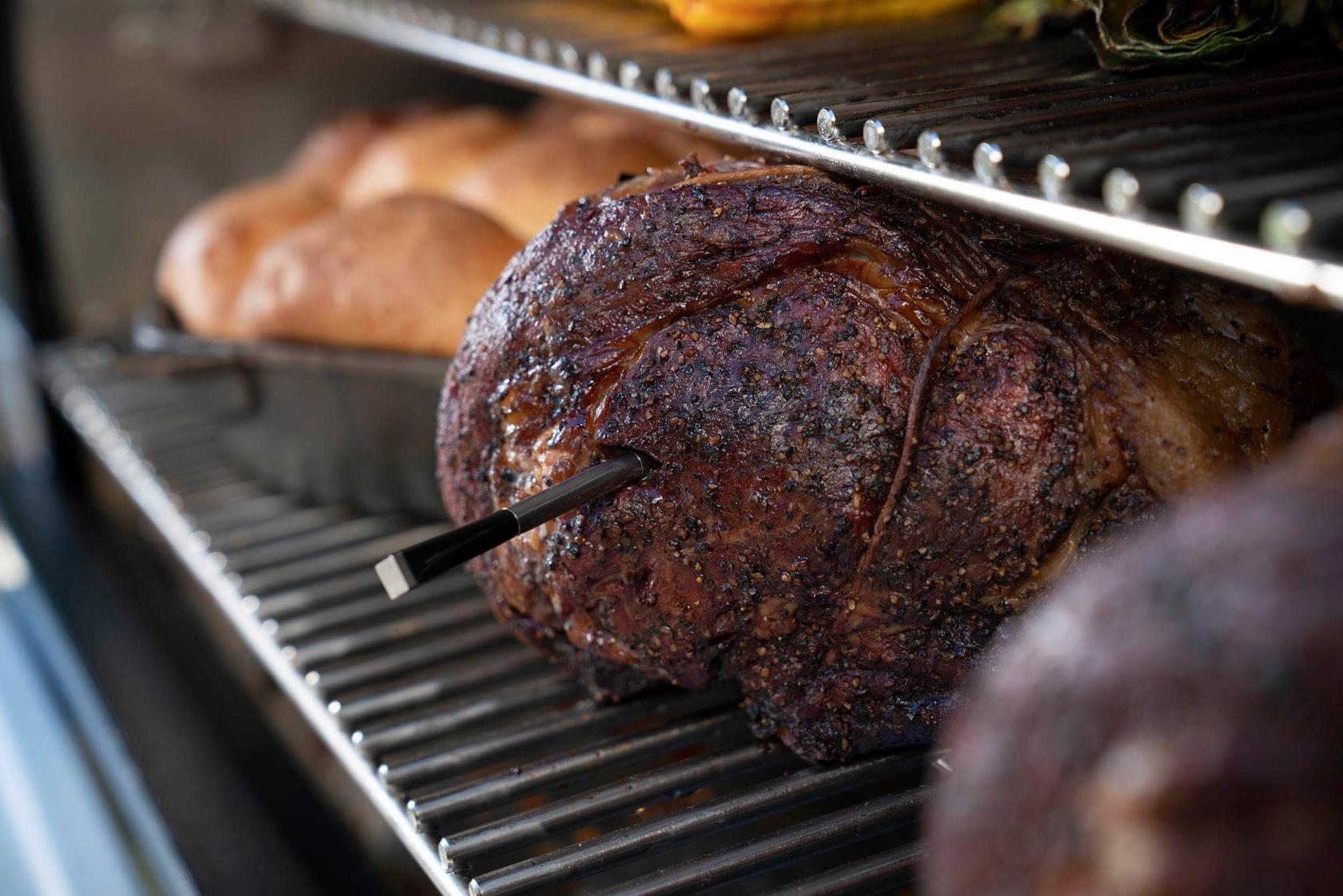
Best Smoked Meat Recipes
Here are some favorite smoking recipes. But there are tons more as well.
Beginner’s Smoked Beef Brisket
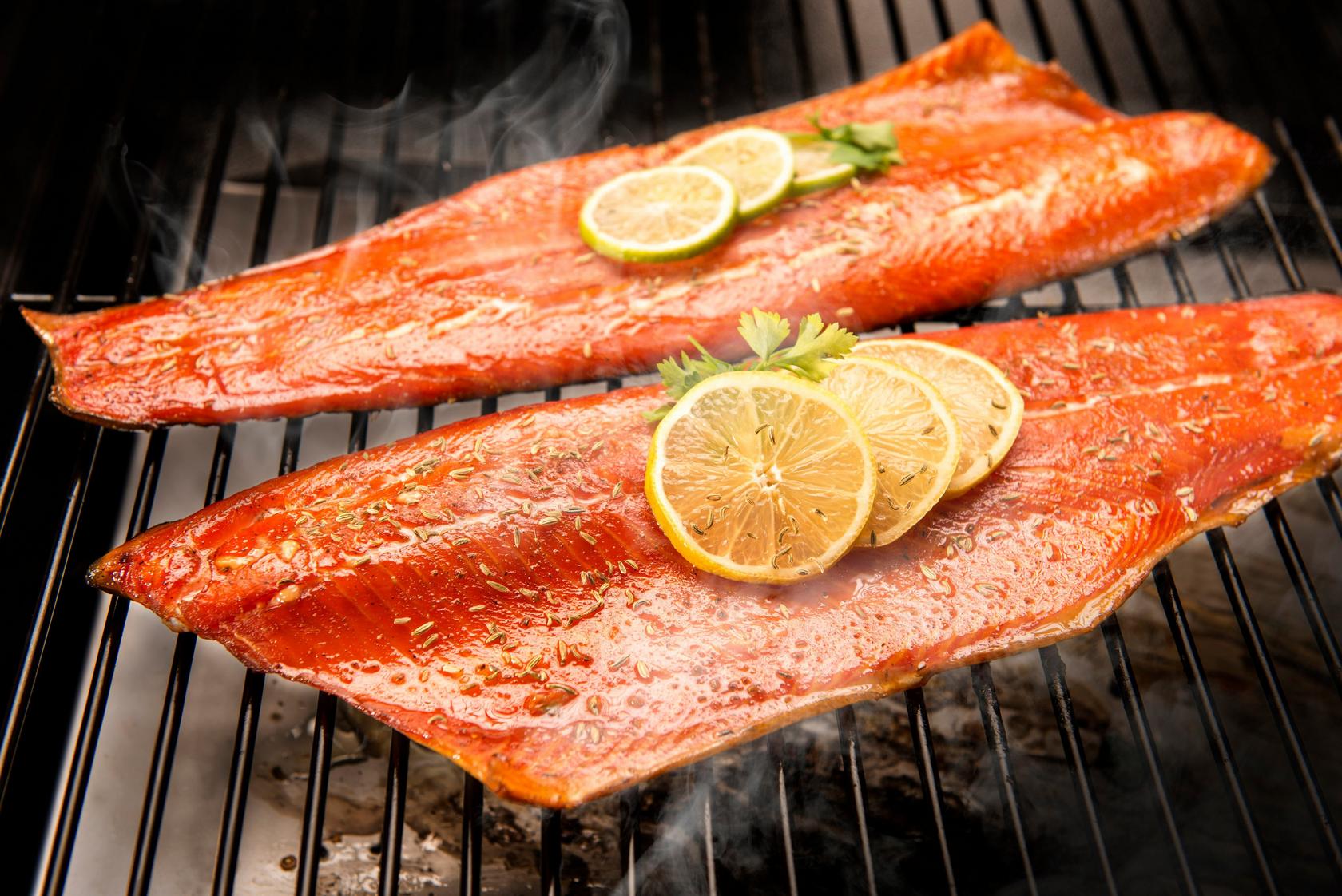
Best Non-Meat Smoked Recipes
As mentioned earlier, smoking is not just for meat. Try making your own smoked simple syrup for outrageously good cocktails. While you’re at it, smoke some nuts to go with your drink. Then try some of these other fun recipes, below.
Parmesan & Rosemary Potato Chips
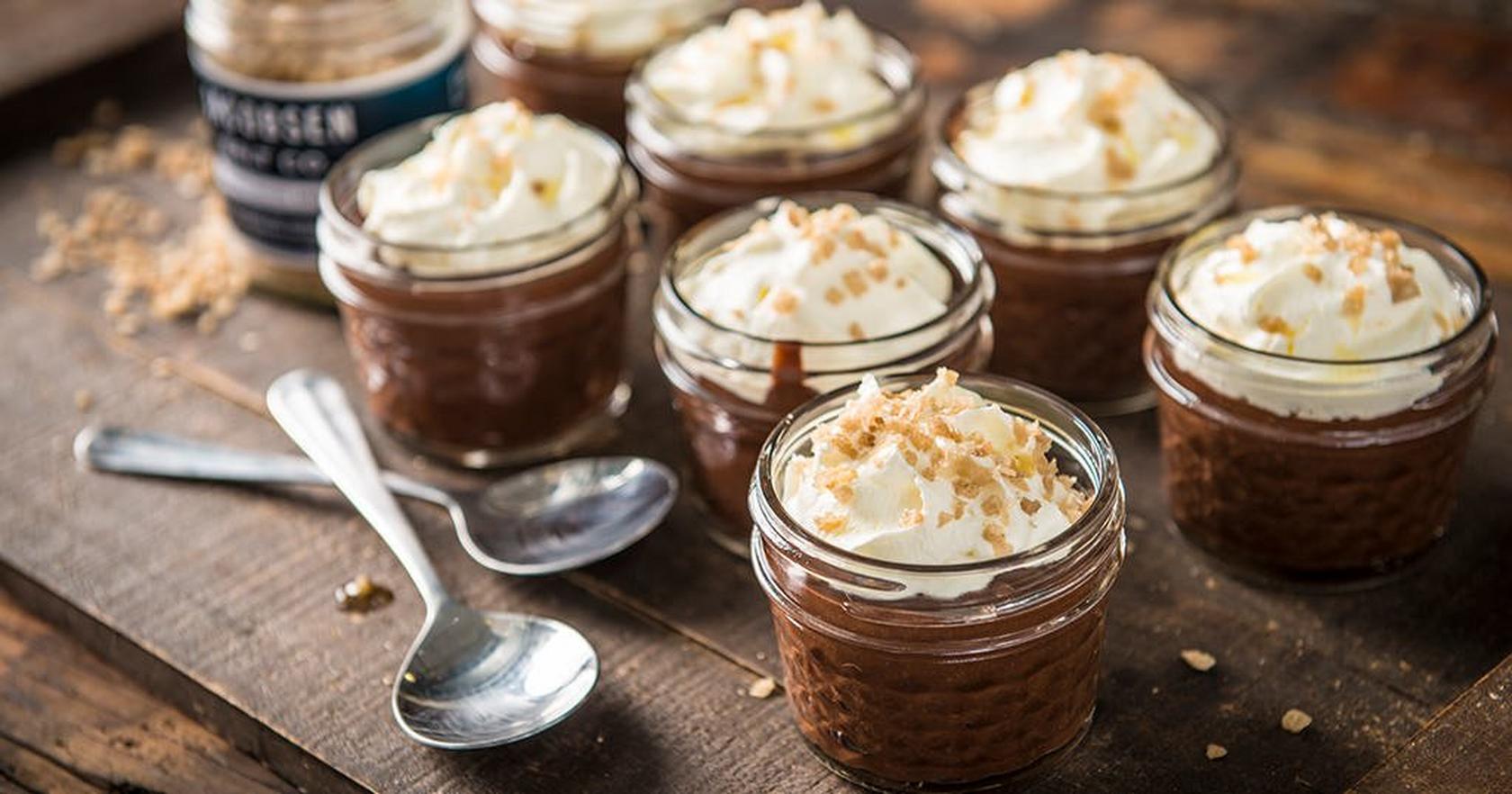
Get More Details in Our Top Smoking Articles
Looking for even more information? Check out these guides.
Now that you have perused the ultimate guide for smoking meat and more, it’s time to head outside and get smoking. The results to effort ratio—meltingly tender wood-fired meat at the touch of a button—could not be better.